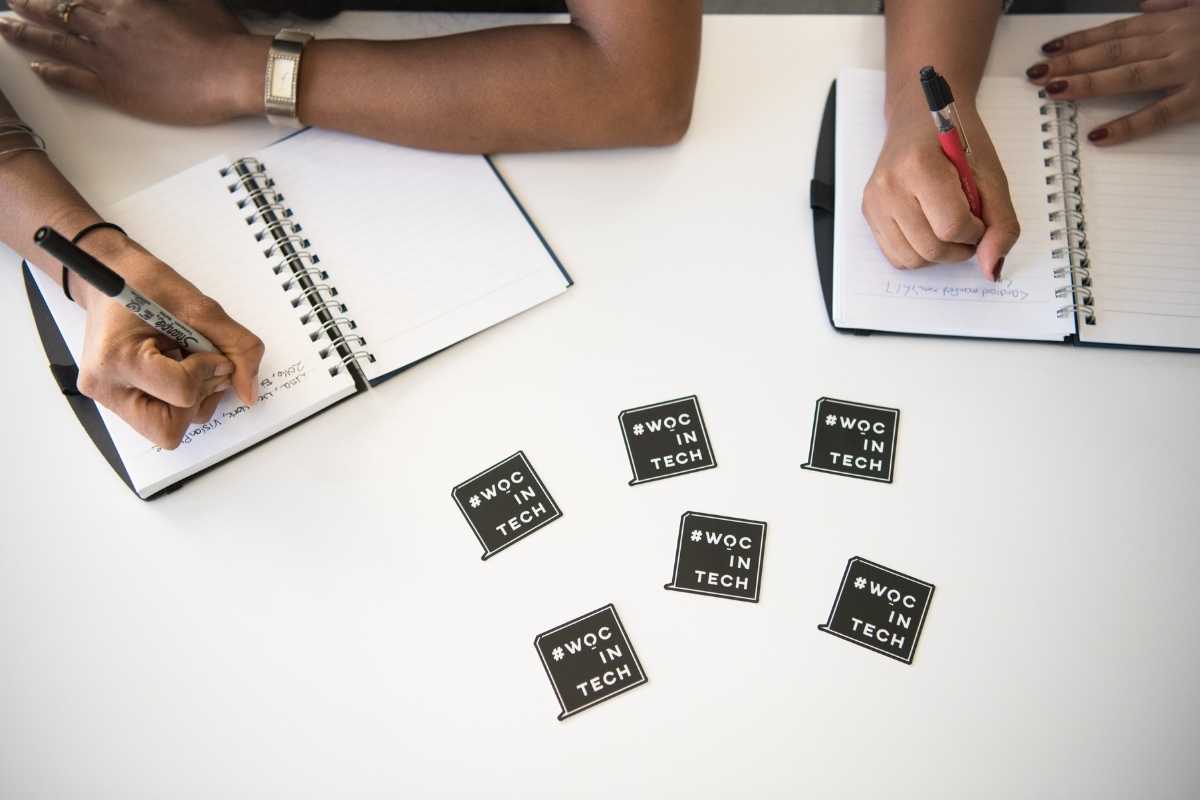Although most Americans are in support of racial diversity in the workplace, in the United States, Black, Indigenous, and other people of color (BIPOC) are still underrepresented in science, technology, engineering, and math (STEM) fields compared to their white counterparts. Even if an individual is a working professional in a STEM field, BIPOC still face a lack of racial diversity among their counterparts and a variety of discrimination within the workplace.
It is 2021, so why is racial diversity still lacking specifically in the STEM fields, and why is it so challenging to address? It comes down to three major components.
Limited Access to Quality Education
Racial disparity inevitably starts at a young age. It begins at home and continues into local communities and schools that we send our children to.
Poverty is a critical factor in preventing non-white children from excelling in STEM. According to the National Center for Children in Poverty, about 65 percent of Black and LatinX children live in low-income households. Not only does this limit a child’s options at home, but it also affects the quality of education the child will receive. Schools in these low-income districts often have students that have above-average needs to be met and below-average resources to provide. Meaning, teachers don’t have the proper resources to support or engage their students in STEM activities or expose them to various STEM careers such as medicine, computer science, or research.
For example, in 2016, only about 30 percent of computer science graduates were Black, according to the National Center for Education Statistics (NCES). Structural barriers such as access to a computer or Internet outside of school as well as limited, or no computer science classes, offered in school prevent unequal exposure to the field for BlPOC students. According to the NCES, less than half of Black and LatinX students have access to a computer outside of schools compared to the two-thirds of white students who reported using a computer at home.
In addition to limited access to a computer, schools in low-income districts often cannot afford the computers or technology needed to teach computer science in their schools. In addition to not being able to afford the technology itself, these underfunded schools might not have the budget to hire the proper teachers to offer a computer science or technology class. This lack of exposure to computer science at a young age can influence BIPOC students’ disinterest in the field as a whole.
Lack of Encouragement = Lack of Confidence
Even though more BIPOC students are graduating with STEM degrees than ever before, a lot of the time, these BIPOC graduates still do not feel welcome in the field.
There is a lack of racial and ethnic role models in STEM from Kindergarten to the college level. Although this might seem like a small issue, this psychologically causes non-white students to feel inadequate compared to their white peers.
Dr. Chris Curran, Assistant Professor of Public Policy at the University of Maryland, states that, “Minority students who are aware of these stereotypes and biases could actually score lower on an achievement test.” Non-white children need to be inspired and encouraged to pursue higher education to the same degree as their white peers.
Some BIPOC students might feel the unprecedented burden of feeling like they have to represent their whole race or ethnicity or prove that they deserve to be there. Some might be thinking things like:
“I don’t see anyone else here that looks like me. Maybe I don’t belong here.”
“I’m the only BIPOC here, so I can’t make a mistake and make us look bad.”
“I’m not like them, I’m one of the good ones.”
These students’ social anxiety put themselves under just because they feel the pressure to do well to prove that stereotype or bias wrong. Mental stress can be detrimental to an individual’s self-confidence.
Discrimination Once in the Work Environment
Congratulations, you are BIPOC, and you made it to the professional world in STEM! I’m sorry to inform you that there are still discriminatory obstacles you are going to face.
According to the Pew Research Center, one-quarter of BIPOC workers find that they experience discrimination in the workplace based on their race or ethnicity. From this population, one in five STEM workers can cite specific examples where their race affected their progression in the company and can prove a lack of respect from coworkers.
BIPOC workers often find their opportunities for promotion or advancement in a company to be minimal compared to their white colleagues. This is an example of institutional racism.
Besides reduced mobility in a company, BIPOC workers often feel a lack of respect from their coworkers. Often Black STEM employees can feel like they have only been selected for a job to fulfill the company’s diversity box.
Importance of Diversity in STEM
Gender and racial inequality are the two most significant complications within the STEM fields. All sciences are collaborative, whether it’s research, computer science, data analysis, software development, or medicine. Having diversity in science allows for better science to be conducted. Having individuals from different backgrounds also brings different perspectives and life experiences to a workplace. This allows for more creativity and innovative problem solving to better advance today’s medicine and technology.
To see more racial diversity within STEM fields requires brutal honesty. This gap in representation of BlPOC is a social construct introduced by institutional racism and conserved by the socio-economic disparities. There have been many diversity programs and financial grants aimed at supporting BIPOC within the STEM fields, but this is not going to fix the racial (and gender) discrimination within the area. The change needs to begin during childhood, at home, and in our schools.
**This article specifically refers to the under-representation of Latinx and Black individuals and does not address the over-representation of Asian American individuals.

Abigail Lindsey
Abigail Lindsey is a biochemical research technician who is currently working at the Cleveland Clinic Center for Therapeutics Discovery while pursuing a Master of Science (MS) in Biochemistry at Case Western Reserve University. She also has experience in the digital marketing and sales industry, as a photographer and graphic designer, sales representative, recruitment specialist, social media coordinator, and content writer.





